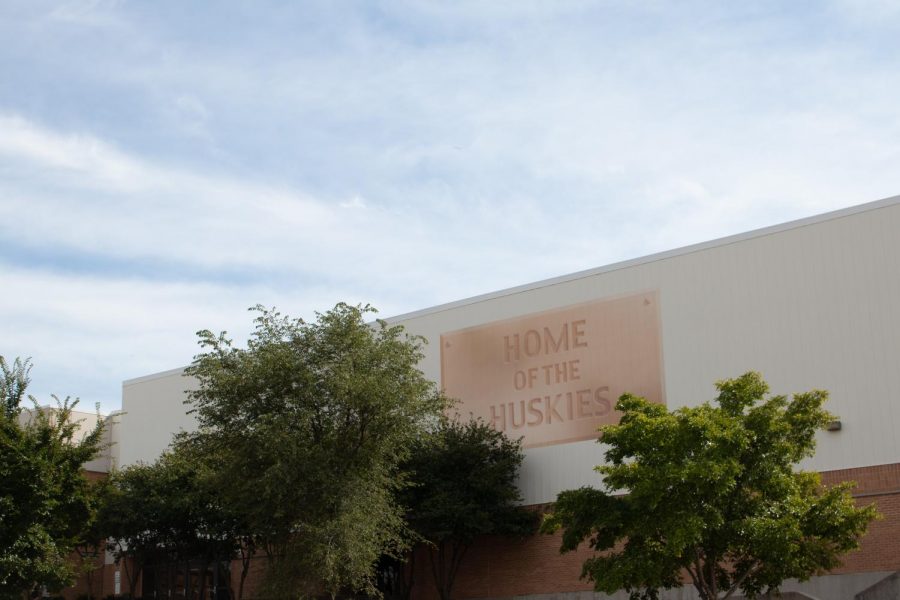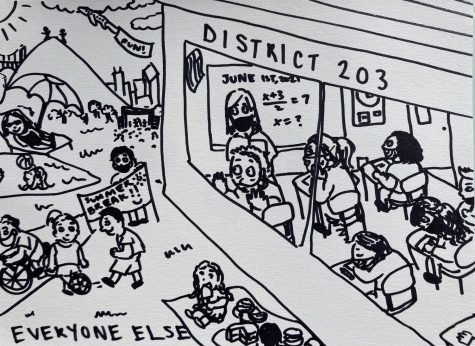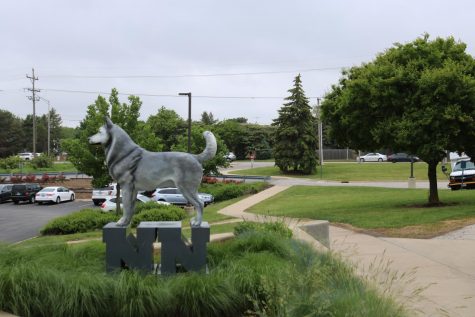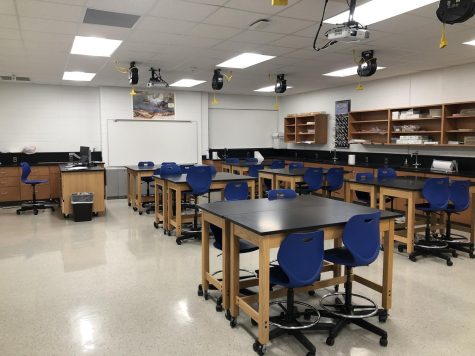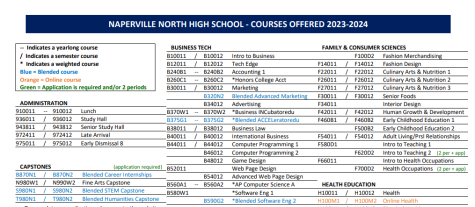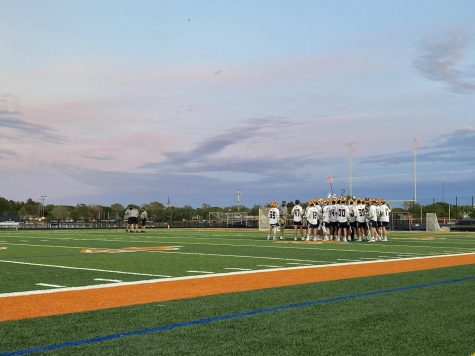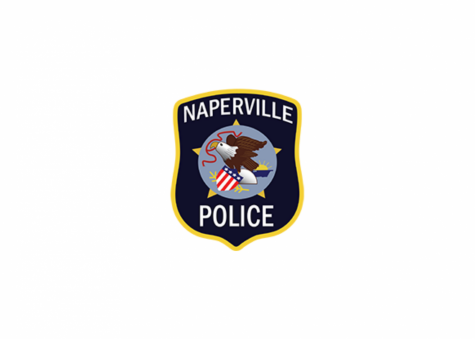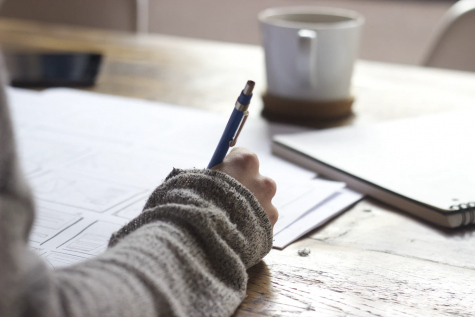Returning to school: Q&A with Principal Wachtel
Photo by Payton Schield
As Naperville North approaches its Jan. 25 hybrid start date, many students have questions about how in-person learning will work with new COVID-19 restrictions. In preparation for this major transition, we talked to Interim Principal Jay Wachtel to get some common questions answered.
Is there a designated place in the building to eat?
We are allowing snacks because of the schedule. Some kids might have four classes in a row, and that might be a challenge if they don’t have a lunch period. To that extent, the cafeterias are places where kids can eat. If you have a lunch period and you want to be on campus, then you can hang out there and you can, while sitting down, take down your mask and eat in the cafeteria. That makes it simple– you have to be sitting in a designated place with permission.
That brings us to the classroom, and in the classroom, it is within the guidelines for students to eat as long as they’re distanced by six feet or more. However, there are some teachers who may not be comfortable with that, so we have given teachers the autonomy where they do not necessarily have to allow eating in a classroom. However, teachers are then able to send kids to a cafeteria to eat. There’s a lot of curriculum that’s broken up into sections, so the teacher can choose when to send their students to the cafeteria to eat for 14 minutes or less, and then come back to the class.
All kids will also be able to grab a breakfast and/or a lunch, based on district and state policy. All lunches will be picked up and eaten after school or away from school and the breakfast will be eaten according to the plan that I just described.
Will students be able to access water fountains?
Water fountains are blocked off, but you can access the water bottle fillers if you bring a water bottle to school and you want to fill it up. We have a lot of those water bottle fillers now, and those are available for students.
When eating in the cafeteria, is there a limit to the amount of students eating at one time?
The Illinois Department of Public Health and the DuPage County Department of Public Health has a limit of 50 students in any one space. We’re going to set up those areas to be somewhere between 40 and 45 tables. We are not using the traditional round tables with eight seats on them, the cafeterias are set up with testing-like tables so it’s not going to be the same as the cafeteria has been in the past. We would have the two cafeterias, the learning commons would be available and then we would also be able to use the field house or some other spaces to provide lunch opportunities. If we discover that in a given period that’s not a lunch period, say third period, there are a lot of students coming down to eat, we might have to stagger who’s allowed snack at a particular time. As we learn more, we’re going to have to be flexible.
Are all hallways one way and will there be signs indicating which way you’re supposed to be going?
There’s stickers on the floor for both stairways and hallways. We had freshmen and some upperclassmen helping them walk schedules and we’ve learned that it can be hard to know the right way to go based on the stickers. Most stairways are one way but there are few that are up and down, like that one near the front of the building because it’s massive. Some hallways are two way, so it’s just one of those things where we’re all going to have to figure it out.
Students don’t have to use these one-way rules outside of the passing periods. If your teacher says you can go downstairs to grab snacks and be back in class in 14 minutes, you can just go because there won’t be very many crowds.
Is there a limited amount of students allowed in the bathrooms?
We’ll do the same bathroom rules as always, if your teacher writes you a pass or it’s a passing period, you can go. The passing periods are 5 minutes so they’re a little shorter because we want to limit congregating or hanging out in the hallways, but kids can use the bathroom. We’re going to ask that instead of us being super rigid, students will make the right choices.
Many of the bathrooms have garbage bags or tape that tape off stalls or sinks to indicate that they are unavailable, but some of them are already kind of socially distanced.
We think it’s a bad idea to try to heavily monitor the space and get kids in trouble, it just doesn’t seem right. We’re going to treat people with respect and treat everybody like adults. Just be responsible and keep social distance in accordance with the posted restrictions. If you have to go to the bathroom, you have to go to the bathroom. Just do it the right way.
Where will temperature checks in the morning take place, and roughly how long will they take?
It will be very similar to how it worked for the SAT and the PSAT. We have those same thermometers that take your temperature really quickly, so that should be pretty quick.
The self-monitoring is an important piece. In terms of where this will happen, we have three doors. The regular entrances open at 7:20. Bus students come in through the bus door and that opens at 7:10, which is around when students get to school. Kids who drive may have to wait in their cars for the doors to open if they get here a little early, and then they can come in.
The very first days, we have to confirm that students have turned in the annual self-certification form and when we confirm that, you’ll get a little green huskie sticker on your ID. Once you have that, the next time you come they’ll check you in with the green sticker and you can just go right in.
We’ll be updating a constant list every day of who can be on campus based on students that are in quarantine or students whose health situation is being investigated. We’ll have to check that, then do a temperature check.
We’re saying “random temperature checks” because it’s not required for us to check every temperature everyday but we’ll try to check every temperature every day. Students are responsible for verifying their own temperature. The whole idea is that students do some self-monitoring in the morning to make sure they don’t have any of the symptoms and we’re asking that students take their temperature in the morning, so our process is kind of a double check.
How will surveillance testing work?
You do it once a week. You’ll have a designated day of the week, and on that day you’ll bring your little spit tube and drop it off. The places to drop off will be at the entrances as part of the check-in process. We have three entrances so there will be three spots to drop it off, it will be labelled and then you’ll put it in there.
We need more kids to participate in the surveillance program. Right now we have more than 70% of staff that are participating but we only have around 35% of students participating in the district. We need more students to sign up for the surveillance program to have the intended outcome of doing a global assessment of where the school is at.
Where will students be when buses drop them off in the morning before class starts?
Students are supposed to go straight to their classrooms. We can’t have any congregation.
If students have a lunch period or study hall, do they have to sign out or can they just leave?
100% of the time when a student leaves campus, even if they left during first period and arrived back for third period, they have to go through the same check-in process with temperature checks again and do the same thing that they did when they originally arrived at school.
With dismissal, kids will just be able to leave when they have a study hall or lunch period. We don’t have a specific process for that. We actually want kids to leave, we want less kids to be here if they don’t need to be.
If students have to wait for a bus or get dropped off early by a bus, where will they wait?
On both ends, if students arrive at school early or are waiting for the bus after finishing their classes, they will be in the cafeteria.
There will also be a bus at 3:00, so if a student wanted to stay and get help from the teacher from 1:30 to 3:00, they could do that and take a 3:00 bus home.
Will sick days still exist where people aren’t in class or, if sick, will students be required to report to class through zoom?
Any student that has symptoms and is feeling ill should communicate with our health office. That’s really important. If you’re an in-person student and you’re supposed to be in class on a given day and you don’t feel well, after you communicate with our nurses office, if you feel good enough to get on your zoom, you can do that. If you do that even on an in-person day, you will be marked present, so that’s not an absence.
That is also true if you are supposed to be remote on that day. If you’re in class in one way or another, you will be marked present. We don’t want in-person students to be mainly staying at home though. If that happens, we’ll reach out to that student and say “it looks like you might be a better fit for online,” and maybe ask that student to move online.
We do have one rule about attendance: students that are in-person students will need to take their tests in person. Let’s say you’ve come every day and then there’s a big math test and that period you end up staying home— we would still require in-person students to take in-person assessments. A teacher could allow a different thing, but assessments need to be taken where you’ve signed up, or however the teacher allows. That’s our only big rule but generally, if you’re supposed to be in-person and you’re at home but participating, you can be marked present.
How will academic integrity of in-person vs. online only students be monitored?
We will continue to monitor academic integrity like we do now. We had a period this semester where there was a series of academic integrity issues, which we are heavily discouraging. Teachers are monitoring integrity using things like Turnitin and other methods. We’re using technology to help with that. One of the answers to that could be that maybe the assessments will be a little different than normal– instead of just being multiple-choice bubble type things, maybe if we have students write more or do a speech or do some other things.
How will switching between online and hybrid work?
You can switch from in-person to online but you cannot currently switch the other way, from online to in-person. We’ve done a lot of work in making sure that the number of students in a classroom is the right number. We’ve really emphasized the protocols and made sure everything was safe. Every time a student were to switch from online to in-person, that would make a whole project for us to make sure that they’re in the right classes.
We are in discussion about when students will be able to switch from online to in-person, we’re thinking maybe around spring break students could opt back into in-person.
Will students be required to change for P.E.?
As of right now, no. There has been some talk about it because in classes like strength and performance, they really get after it and can get really sweaty. It might be allowed in specific situations but generally, PE locker rooms are closed and activities will not be ones where you get very sweaty.
Will students have access to lockers?
There will be no lockers in the building being used. Most kids use a backpack and the good news is that you only have four periods, so you might have less books to carry every day and you can switch them out.
If students have winter coats, will they have to carry these around with them instead of putting them in a locker?
Yes, but if students need a locker they can request one and we can probably arrange it.
Responses have been edited for length.
Tessa Devine contributed to this story.
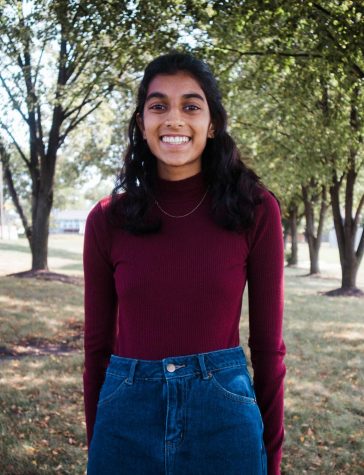
Reyah is a senior at North and is excited to take on the role of Editor-in-Chief in her third year writing for The North Star. This year, she hopes to...
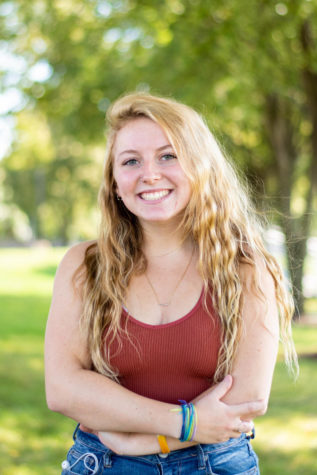
Payton is a senior at Naperville North, and is excited to be a first-time staff member at The North Star. She focuses on photography, but is excited to...

